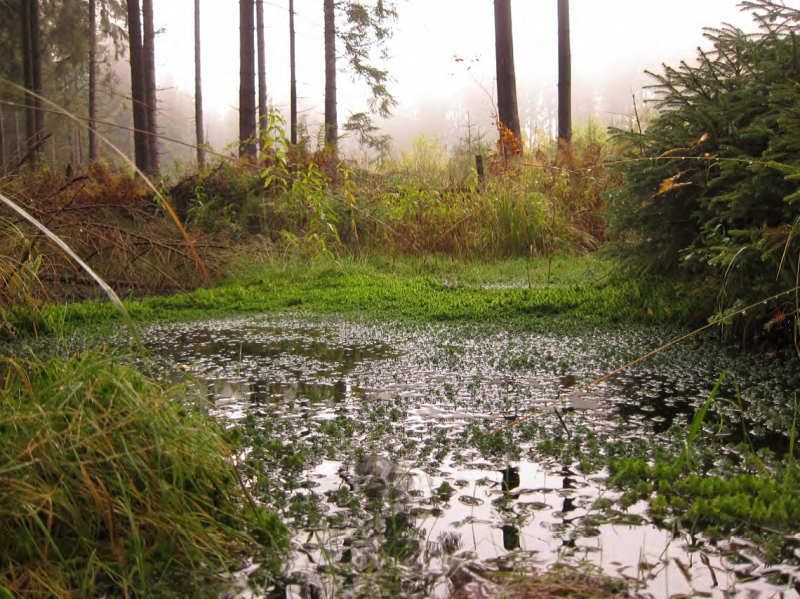According to the Convention on Wetlands (1971), a wetland is an area of marsh, fen, peatland or water, whether natural or artificial, permanent or temporary, with water that is static or flowing, fresh, brackish or salt, including areas of marine water the depth of which at low tide does not exceed six metres. It provides water retention, biodiversity enhancement or water quality improvement. Wetland restoration and management can involve: technical, spatially large-scale measures (including the installation of ditches for rewetting or the cutback of dykes to enable flooding); technical small-scale measures such as clearing trees; changes in land-use and agricultural measures, such as adapting cultivation practices in wetland areas. They can improve the hydrological regime of degraded wetlands and generally enhance habitat quality. Creating artificial or constructed wetlands in urban areas can also contribute to flood attenuation, water quality improvement and habitat and landscape enhancement.

Wetland in a forest
Source: Gebhard Schueler’s presentation, NWRM Workshop 1
| Benefits | Level |
|---|---|
|
BP1 - Store runoff
|
High
|
|
BP2 - Slow runoff
|
High
|
|
BP3 - Store river water
|
Medium
|
|
BP4 - Slow river water
|
Medium
|
|
BP6 - Increase infiltration and/or groundwater recharge
|
Medium
|
|
BP7 - Increase soil water retention
|
Medium
|
|
BP9 - Intercept pollution pathways
|
Medium
|
|
BP10 - Reduce erosion and/or sediment delivery
|
Low
|
|
BP11 - Improve soils
|
Low
|
|
BP12 - Create aquatic habitat
|
High
|
|
BP13 - Create riparian habitat
|
High
|
|
BP14 - Create terrestrial habitats
|
Low
|
|
BP17 - Absorb and/or retain CO2
|
High
|
|
PO1 - Improving status of biology quality elements
|
High
|
|
PO2 - Improving status of physico-chemical quality elements
|
Medium
|
|
PO3 - Improving status of hydromorphology quality elements
|
Low
|
|
PO5 - Improving quantitative status
|
Medium
|
|
PO7 - Prevent surface water status deterioration
|
Medium
|
|
PO8 - Prevent groundwater status deterioration
|
Medium
|
|
PO9 - Take adequate and co-ordinated measures to reduce flood risks
|
Medium
|
|
PO10 - Protection of important habitats
|
High
|
|
PO11 - Better protection for ecosystems and more use of Green Infrastructure
|
High
|
|
PO12 - More sustainable agriculture and forestry
|
Low
|
|
PO13 - Better management of fish stocks
|
High
|
|
PO14 - Prevention of biodiversity loss
|
High
|
|
ES1 - Water storage
|
Medium
|
|
ES2 - Fish stocks and recruiting
|
High
|
|
ES3 - Natural biomass production
|
Medium
|
|
ES4 - Biodiversity preservation
|
High
|
|
ES5 - Climate change adaptation and mitigation
|
Medium
|
|
ES6 - Groundwater/aquifer recharge
|
Medium
|
|
ES7 - Flood risk reduction
|
Medium
|
|
ES8 - Erosion/sediment control
|
Low
|
|
ES9 - Filtration of pollutants
|
Medium
|
|
ES10 - Recreational opportunities
|
Medium
|
|
ES11 - Aesthetic/cultural value
|
Medium
|
